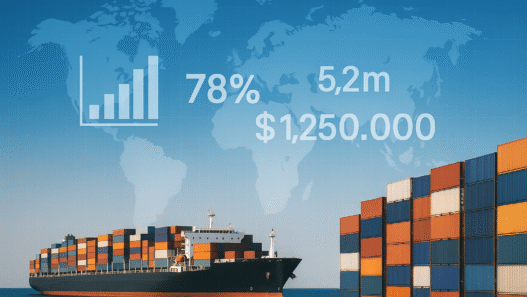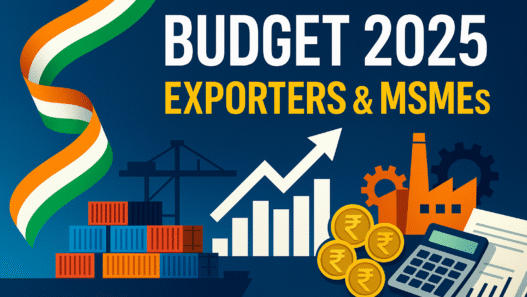A weakening Indian rupee can trigger significant consequences for small and medium enterprise (SME) importers. While large corporations often have the resources and financial acumen to hedge against currency volatility, SMEs generally operate on thinner margins and have limited buffers to absorb sudden forex shocks. This article examines the impact of a depreciating rupee across various supply chain stages for SME importers and introduces some foundational hedging tactics to help mitigate the associated risks.
Table of Contents
Understanding the Rupee’s Weakness
The rupee’s exchange rate is influenced by global oil prices, capital flows, interest rate differentials, geopolitical uncertainty, and domestic economic indicators. When the rupee weakens against major currencies like the US dollar or euro, the cost of imports rises, as more rupees are required to purchase the same quantity of foreign goods or services.
For SMEs, especially those dependent on importing raw materials, machinery, or intermediate goods, this can create cascading effects across the value chain.
Stage 1: Sourcing & Procurement Costs
- Raw Materials: Importers of raw inputs in sectors such as chemicals, plastics, or electronics face immediate cost escalation when the rupee weakens.
- Price Pass-through Challenges: SMEs often find it harder to pass on cost increases to customers compared to larger players due to competitive pricing pressure and lower brand elasticity.
- Advance Payments: Many suppliers abroad demand advance payment in foreign currency. A weaker rupee increases the upfront capital required, tightening liquidity for SMEs.
Stage 2: Manufacturing & Production Costs
- Imported Machinery & Parts: SMEs using imported equipment or parts for their production lines bear higher costs not just at the time of purchase, but also for repairs and spares.
- Energy Inputs: Global crude oil prices affect domestic fuel and energy rates, indirectly impacting manufacturing costs. A weak rupee magnifies this, raising electricity and diesel expenses.
- Wages and Productivity: With inflationary pressures rising due to import-led cost hikes, wage expectations can also increase, squeezing margins further.
Stage 3: Distribution & Logistics
- Higher Freight Charges: International shipping and air freight charges are typically invoiced in USD. A weaker rupee leads to immediate cost hikes for logistics.
- Warehousing & Insurance: Currency depreciation affects the cost of goods in transit, which in turn increases the premiums for insuring them. Warehousing rentals can also go up if landlords index rates to forex or inflation indicators.
Stage 4: Inventory & Working Capital Management
- Inventory Holding Costs: SMEs might resort to bulk importing to pre-empt future currency drops. This ties up cash in inventory and raises storage costs.
- Working Capital Stress: Rising import bills mean larger working capital requirements. Accessing finance becomes more critical, but costlier if interest rates are rising simultaneously to fight inflation.
- Delayed Payments & Credit Cycles: Forex losses on existing payables strain SME balance sheets, often leading to delays in vendor payments and a ripple effect through the supply chain.
Exchange Rate Volatility: A Hidden Enemy
- Transaction Risk: SMEs are exposed to currency movement between order placement and payment settlement. Even small shifts can wipe out profit margins.
- Translation Risk: For businesses with foreign currency liabilities, depreciation inflates the value of those liabilities in rupee terms.
- Operational Risk: Cash flow predictability becomes difficult, especially when exchange rates are volatile, adding uncertainty to business planning.
Quantifying the Impact
To illustrate, consider an SME importer purchasing components worth $100,000 monthly. At an exchange rate of ₹80/USD, this amounts to ₹8 million. If the rupee depreciates to ₹85/USD, the monthly import cost rises to ₹8.5 million – a 6.25% increase. For a firm with tight 8-10% operating margins, such a jump can halve profits unless mitigated.
Starter Hedging Moves for SMEs
While comprehensive forex strategies may be out of reach, SMEs can consider the following:
- Forward Contracts: Lock in exchange rates for future payments. Useful when payment schedules are fixed.
- Currency Options: While slightly more expensive, they offer the right but not the obligation to buy/sell at a predetermined rate.
- Natural Hedging: Align receivables and payables in the same currency. For instance, an SME importing raw materials but also exporting finished goods can balance inflows and outflows in USD.
- Invoicing in INR: Where possible, negotiate with foreign vendors to invoice in rupees. This may not always be feasible but can work with long-term partners.
- Diversify Supplier Base: Reducing over-reliance on a single geography or currency can spread risk. Consider near-shoring or domestic alternatives where viable.
- Bank Advisory Services: Many banks offer forex advisory desks specifically for SMEs. These services include rate alerts, exposure tracking, and even training modules.
- Dynamic Pricing Models: Implement pricing policies that allow revision in sync with forex changes, especially for large, custom, or long-lead-time orders.
Policy Support and Financial Instruments
To support SMEs, regulatory bodies like the RBI and trade promotion councils have introduced schemes such as:
- Export Credit Guarantee Corporation (ECGC): Though mainly for exporters, it offers some tools that reduce credit risk, indirectly supporting importers.
- Interest Equalisation Scheme: Helps reduce the cost of credit, cushioning the overall financial burden.
- Custom Bonded Warehousing: Allows duty deferment until goods are used, which can ease cash flow stress.
SMEs should also keep track of updates in FEMA (Foreign Exchange Management Act) norms and be in touch with trade associations for guidance.
Global macroeconomic uncertainty continues to keep the rupee vulnerable. Tightening monetary policy in the US, oil supply shocks, or geopolitical disruptions can all lead to sudden currency swings. As India increasingly integrates with global supply chains, SMEs must build resilience through prudent forex management.
While SMEs may not have the luxury of dedicated treasury teams, basic awareness and proactive hedging can go a long way in protecting profits. A weak rupee need not spell doom, but ignoring its impact might.
A weakening rupee directly influences the cost structures and profitability of SME importers. Every link in the supply chain feels the heat – from sourcing to logistics to working capital. The way forward involves both strategic adaptation and financial discipline. By understanding the risks and employing basic hedging tools, SMEs can mitigate the impact and position themselves for sustainable growth despite currency volatility.









